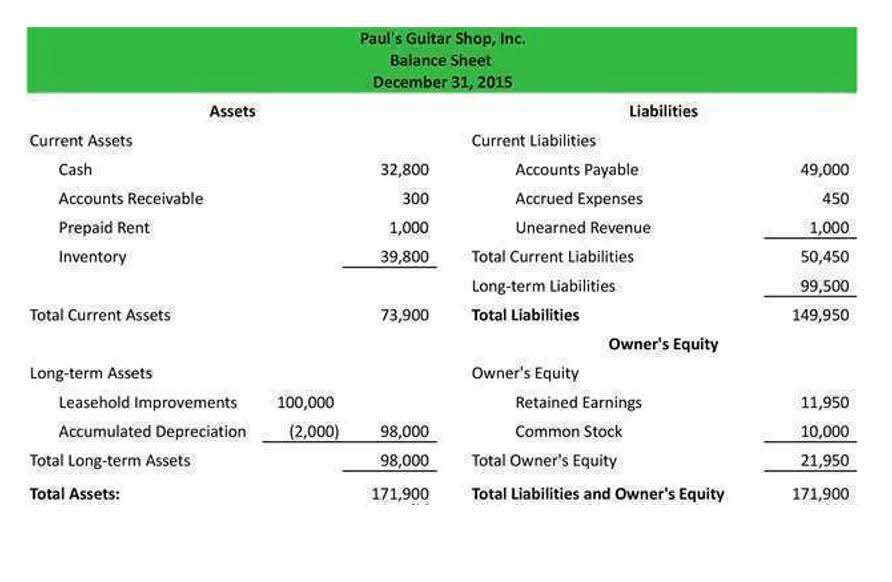Content
- Workers’ comp costs: Frequently asked questions
- What Is Strict Liability?
- How to calculate workers’ compensation cost per employee
- How to Calculate Work Comp Per Employee
- But how is compensation calculated when some jobs are more dangerous than others?
- A Real-World Example: Estimated Wages for Workers’ Compensation
- How your experience modification factor affects your premium.
- Workers Comp Calculator: How Much Does Workers Comp Insurance Cost?

This calculates the medical costs per active workers’ comp medical-only claim. Now, that information may suggest to you that employees are not using certain protective gear, are using it improperly, or don’t have any protective equipment to speak of. Whatever the case, you’ve recognized a problematic safety issue and can set about correcting the improving the situation. For purposes of calculating the update to the payments for medical treatment rendered on and after Jan. 1, 2019, the percentage increase in the statewide average weekly wage is 2.3 percent. For purposes of calculating the update to the payments for medical treatment rendered on and after Jan. 1, 2021, the percentage increase in the statewide average weekly wage is 4.6 percent. A self-insured employer has the option of administering its own workers’ compensation claims or contracting with a third party administrator to provide these services.
A workers’ compensation policy is important to protect you and your employees. Here’s a sample calculation of an individual business’s premium rate for one risk classification.
Workers’ comp costs: Frequently asked questions
Calculates indemnity costs for active workers’ comp indemnity claims per worker. “Likely, if your annual estimated premium is less than $1,000, you’ll have to pay for the entire year all at once,” Snyder explains. “If your premium is more than $1,000, the insurance company may offer an installment plan. Once the insurance company calculates the premium, the insured business is required to make its initial payment. If the employee is the victim of a crime that happened at work, you must give notice of workers’ compensation eligibility within one working day of the crime. The Assigned Risk Plan Learn more about this coverage, which provides a guaranteed workers’ comp insurance market for employers unable to secure coverage in the voluntary market.
- Let’s pretend the rates for their jobs are $1.00 and $0.70, respectively.
- There may also be a difference in how they determine premiums for annual versus month-to-month coverage.
- Both severity and frequency of claims can contribute to an increase or decrease in EMR.
- Back-office administration and monthly reporting for all active customers.
- The Hartford estimates that workers comp insurance costs about $1 for every $100 in payroll.
The basis for an employer’s workers’ comp insurance premium is your payroll. For each $100 dollars of your payroll, there is a specific rate, which is determined by the classification codes of your employees. Streamlined software solutions can help you calculate payroll, find the right plan, and determine workers’ compensation insurance cost for your organization.
What Is Strict Liability?
Let’s take a simple example of a courier company in a state with a $7.00 driver rate and a $.60 clerical rate. The courier companies pay its drivers $150,000 and office staff $45,000 annually. WC premiums would be $10,500 for drivers (7.00 x 1500) and $270 for clerical (.60 x 450). The payrolls or exposures developed during an experience period of more than two years produced an average annual premium at base rates of at least $3,000 per year.
Misclassification of your business can be costly, as some classification codes / types of work cost less to cover. For example, the correct classification for courier companies is “parcel delivery,” which covers transportation of shipments weighing less than 100 pounds. And while it’s important to understandwhyyour business needs a workers’ comp policy, it’s equally important to understandhow your premium rate is calculated. Each year the NCCI computes the rating for each eligible employer based upon the employer’s individual payroll and loss experience. Your actual losses are measured against expected losses for the amount of payroll in each class reported for a given period of time.
How to calculate workers’ compensation cost per employee
In fact, if you have two or more employees, you’re legally required to have coverage to protect both them, and your business, from a catastrophe. Safety and human resources professionals are often charged with analyzing the many factors that influence Workers’ Comp Insurance costs. Job classification codes, experience Mods, risks factors, industry rating systems and other variables – determining your premium can seem complex and expensive. How to Calculate Workers Compensation Cost Per Employee Once you understand the basics of how premiums are calculated, it’s easier to identify areas where costs can be reduced. Another common mistake is that you might have employees you don’t know about. In the U.S., anyone you hire to do work for your company will be entitled to compensation if injured on the job. Over the last few years, there has been a great deal of legislation to protect workers in the ever-growing gig economy.
Once all the other factors are defined, every business owner needs to shop workers’ compensation insurance costs among insurance providers. Some workers’ compensation insurance companies have higher rates than others, but this isn’t a standard rule. Every carrier has what’s called a “risk appetite.” If an industry is in a carrier’s appetite, the rates are usually more favorable than those from a carrier that doesn’t have an appetite for the risk. The experience modification rates is a representation of how the workers’ compensation claims experience compares to another similar business in your state. This means that they pay 100% of the rate assigned to the class code with no automatic credit or debit adjustments. The cost of workers’ compensation depends on the business size, location, industry, and claims history.
How to Calculate Work Comp Per Employee
Since states will have varying results in terms of frequency and severity, rates will vary to reflect and account for the experience of each state. Every US state has a workers’ compensation department or board that governs how workers’ compensation insurance works in the state. These rules may include how long an employee has to make a claim after an injury, the process employers must take after they learn about an injury, andhow workers’ comp premium rates are calculated.

For example, employees moving freight and stock and nursing assistants can experience strains and sprains. You can purchase a copy of the Scopes Manual by visiting the NCCI online catalog. Click here or fill out the form below to see how PrimePay’s workers’ comp solution can help improve your cash flow. Outsource your payroll to one of our licensed payroll partners or ask us to work with your current provider.
Each class code is assigned a base rate for every $100 of payroll. For example, a workers’ compensation rate of 1.5 equals $1.50 for every hundred dollars of payroll in the class code.
But how is compensation calculated when some jobs are more dangerous than others?
An underwriter can offer pricing based on unique conditions within a small business, including years of experience, workplace safety training, and work environment. Even if your business itself isn’t at fault, workers’ compensation helps your employees and provides a measure of protection for your organization. In exchange for workers’ comp benefits, employees have limited rights when it comes to seeking legal action against an employer. In some ways, credits and debits undermine the process of filing rates for approved under state laws. Insurance companies can quickly and easily arrive at workers comp cost they think we sell the coverage.
Among the major industry groups under the private sector, compensation costs for utilities were the highest in December 2020, at $67.62 per hour, according to the latest report released by the BLS. This equation calculates the number of new medical-only claims accrued over any period of time. Tracking for the information listed above can tell you where your workers comp program needs improvement, and suggest solutions as to how to fix problems.
A Real-World Example: Estimated Wages for Workers’ Compensation
By comparison, office and sales rates can be less than 1 % or $1.00 per $100 of an employee’s compensation. The Oregon Department of Consumer and Business Services charges an assessment on all earned workers’ compensation premium collected by insurance carriers. The assessment is subject to change by DCBS at any time, but generally changes on January 1 of each year. The second-highest cause of workers compensation claims is slips and falls, making up 27% of workers compensation claims, according to The Hartford. Many states set workers compensation rates based on guidance from the National Council on Compensation Insurance .
How long does it take to negotiate a settlement?
The average settlement negotiation takes one to three months once all relevant variables are presented. However, some settlements can take much longer to resolve. By partnering with skilled legal counsel, you can speed up the negotiation process and secure compensation faster.
Clerical workers and outside sales personnel are two common standard exemption examples. NCCI develops the pure premium rates to ensure that funds are available to pay injured workers’ claim benefits. The pure premium excludes individual carrier administrative expenses and differ by industry classification. These rates are filed annually by NCCI for approval by the Oregon Department of Consumer and Business Services . After you run your payroll, you can look up your class code, which can help you find your rates. These rates will give you an estimate but won’t be your exact workers’ comp quote.
For better cash flow management, you can spread your premium payment out over the year instead of paying one lump sum. Just be sure to choose apayroll providerthat gives you the option of having your workers’ comp premium deducted each payroll period.
While policies are nearly always active for 12 months, a workers’ compensation insurance quote might be represented as an annual premium or the monthly payment. Your preferred payment plan and any changes in your payroll throughout the year will also influence your final cost. To ensure that you find the best price for your business, it’s recommended that you request quotes from a variety of workers’ compensation insurance providers. Alternatively, you can use an independent agency or broker who can evaluate the options and present you with the most competitive rates available to your type of business. Figuring out how to calculate your workers’ comp cost per employee means connecting with an insurance provider to determine your annual premium.

Contact us and we can help you understand workers’ compensation insurance and find the right coverage for your business. “For many businesses, every employee has the same classification code,” says Snyder. “The logic is that employees might have to fill in for other roles at some point, so they all share the same risks.” If, for example, you run a restaurant, your bartenders and servers may have the same code. https://www.bookstime.com/ Sign up for theClaim & Account Center to view employer account and claims information such as premium rates, account balance and injured worker claim information. Modifiers or “mods” are calculated by the NCC and follow you wherever you are for coverage. The formulas used are complex, but the basic idea is to compare your business with the “expected” losses of a comparable business in your classification.
Workers’ Compensation Costs
Executive officers and directors of corporations must be included in workers’ compensation coverage, unless the corporation is fully owned by the directors and officers. If the directors and officers fully own the corporation, then they may elect to be excluded from workers’ compensation benefits.

Next, multiply $206.61 by 260 (the number of days a full-time employee would work in a year). It’s important to note that while there are standard codes created by the National Center for Compensation Insurance , there may be some variance in how roles are coded depending on your state.
The most costly lost-time workers’ compensation claims by nature of injury are for those resulting from amputation. These injuries averaged $113,695 per workers’ compensation claim filed in 2018 and 2019. The next highest costs were for injuries resulting in fracture, crush, or dislocation ($59,749), other trauma ($59,298), and burns ($53,416).